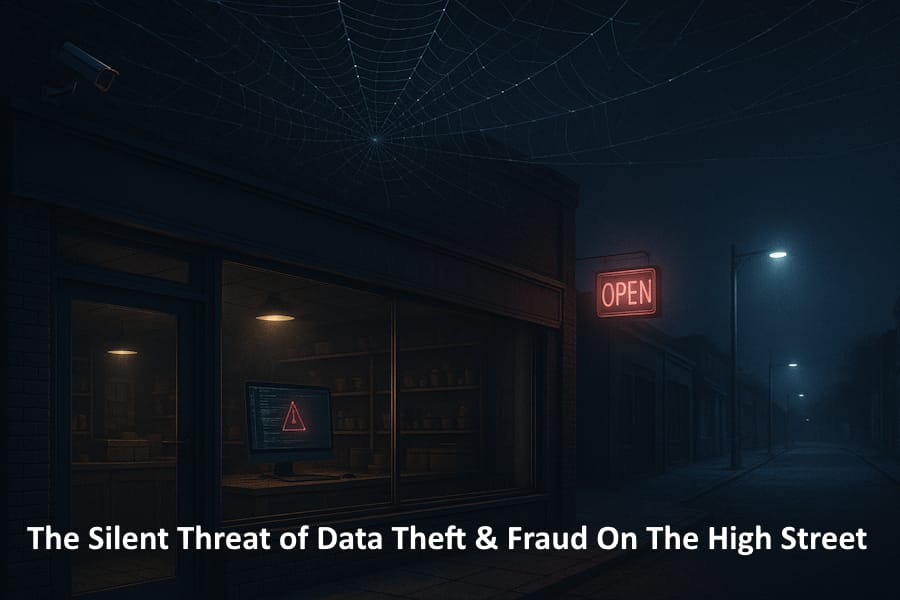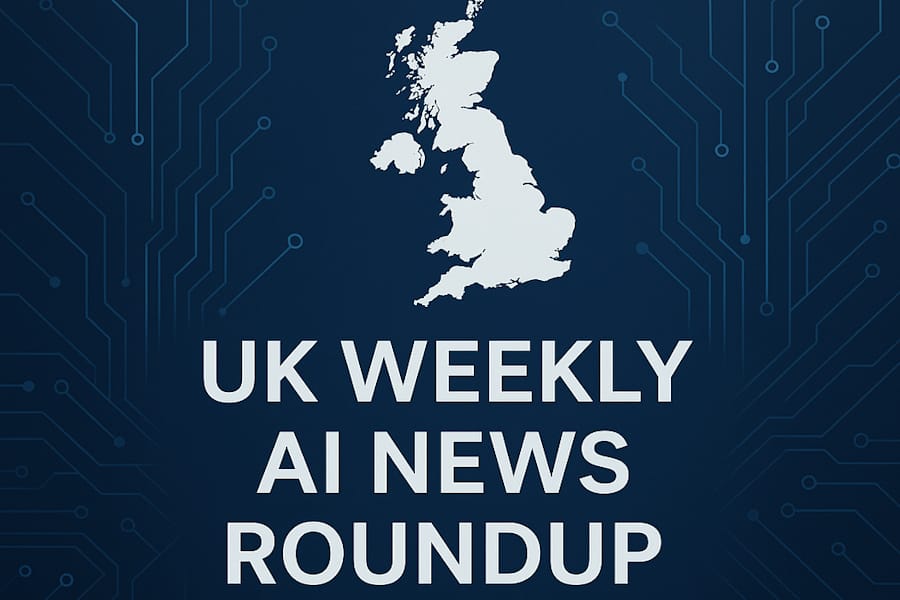Why the Biggest Threat to Cybersecurity Comes from Small Businesses, and How AI Is Making It Both Worse and Better

Publish Date: Last Updated: 8th November 2025
Author: nick smith- With the help of CHATGPT
While the headlines are dominated by billion-dollar data breaches at household-name corporations, an even larger and less visible cyber-security crisis is unfolding quietly: the one driven by small businesses. These “mom-and-pop” enterprises, local hotels, travel agents, accounting offices, retailers, are often overlooked targets, yet they hold customer data, operate older or less-secure systems, and face hackers bent on exploitation. At the same time, the rise of artificial intelligence is creating a paradox: offering powerful new defence tools even as it significantly amplifies attacker capabilities.
The Illusion of Security
When large organisations such as multinational retailers or well-known service firms are breached, the incident becomes newsworthy because of scale, brand recognition, and the volume of stolen data. These companies typically invest tens of millions in monitoring networks, detecting anomalies, and preparing for inevitable intrusions. They may still get hit (and do), but they have a degree of resilience, awareness, and public-visibility.
By contrast, the focus on these “big” hacks creates a false sense of security for the broader economy: if the major players are defending themselves, then perhaps the system is safe. Not so.
The Hidden Danger Beneath the Surface
The real threat is hidden in plain sight: small businesses whose systems and operations are much less resilient. These firms often:
- run on outdated software or hardware, with known vulnerabilities;
- use default passwords or poor password hygiene;
- lack dedicated IT/security staff or monitoring tools;
- keep devices connected 24/7, sometimes without oversight over weekends;
- hold customer or supplier data nonetheless, invoices, bookings, personal details, and may be linked into larger supplier networks.
In the UK, for example, 42 % of small businesses reported suffering a cyber-attack or breach in the past year, with median recovery costs standing at approximately £7,960.
Another study showed that 43 % of all cyber-attacks target small and medium enterprises (SMEs).
Despite this, many SMEs lack basic cyber-security policies, more than two-thirds of UK SMEs reportedly do.
Because these businesses are less visible, their breaches are often unreported or under-publicised. Yet the knock-on consequences for customers, suppliers and trust in the local economy can be profound.
A Real-World Example
Consider this anecdote: A friend booked a hotel through a major booking platform. Three days after the booking, he received a payment demand that appeared to come from the hotel, correct room details, dates, amounts. He sensed something was wrong, investigated, and discovered that the hotel’s system had been compromised, not the booking platform. Now imagine how many other guests paid without question.
A small hotel might hold hundreds of guest bookings, their names, contact details, payment records. One successful infiltrator can quietly monitor for months, then strike when both systems and human behaviours are off-guard. The hack may leave no loud pop-up message; instead the attacker sits quietly, blending in, waiting for the moment to extract value.
The Growing Sophistication of Cybercrime
The tools of the attacker are evolving rapidly, and getting smarter thanks to AI. For SMEs in particular:
- AI-generated phishing emails now mimic legitimate branding, invoices or demands, often without the spelling errors or tell-tale syntax of older scams.
- Automated probing and network scanning tools can run at scale, identify weak points in poorly-defended systems, and exploit them with minimal human input.
- Open-source and locally-run AI models can create realistic fake invoices, craft tailored emails, and automate multi-stage attacks.
One recent UK study found that AI-generated attacks were the top cybersecurity concern for 35 % of UK SMEs heading into 2025.
Criminal networks are often the fastest adopters of new tech, using the same rapid innovation that legitimate businesses champion, but flipped for exploitation.
The Double-Edged Sword
The same AI that empowers attackers can also be the defender’s ally, if used appropriately. For small businesses:
- AI-enabled monitoring tools can flag unusual network traffic, anomalous device connections, or suspicious user behaviour.
- AI can help automate backups, detect fake invoices, and even surface phishing attempts before they reach human inboxes.
- Affordable cloud-based AI security services are increasingly available, but only if the business has awareness, budget and implementation discipline.
The problem: most small businesses are not yet equipped to deploy or exploit these tools fully. Without proper configuration, staff training or budgeting, the “AI defender” remains a theoretical promise rather than a practical shield.
The Human Factor
Technology alone doesn’t fix the problem, the human element remains the weakest link. Many attacks succeed because of:
- phishing emails clicked by unsuspecting staff;
- reuse of passwords or shared login credentials;
- ignorance of the damage a breach can bring (both direct financial and reputational);
- lack of incident response plans, backups or cyber-insurance.
Large corporations know this, they monitor for breaches, prepare for the worst, accept that human errors will occur and build the systems accordingly. Small businesses often do not.
Consequences and Cost
When a small business is compromised, the damage can be wide-ranging:
- direct financial cost to the business (recovery, remediation, lost income);
- cost to customers (fraud, identity theft, invoice exploitation);
- cost to suppliers and connected businesses (via cascading trust failures);
- erosion of trust in local commerce and digital systems more broadly.
Even though each individual SME breach might be smaller than a headline corporate hack, the volume and cumulative effect make this threat systemic. It chips away at the underlying digital economy’s resilience. Some sources estimate that more than 60 % of UK SMEs have suffered multiple attacks in a year.
What Can Be Done
For small businesses, practical steps matter:
- Keep software, firmware and systems up to date; apply patches promptly.
- Use strong password hygiene: unique passwords per system, change defaults, enable multi-factor authentication (MFA) wherever possible.
- Limit privileges: separate devices for administration vs customer operations; restrict admin rights to few staff.
- Regularly back up data and test recovery: keep backups offline or isolated from the main network.
- Train staff to recognise phishing: urgent payment demands, changes in vendor account details, unsolicited emails. Encourage a “when in doubt – call” approach.
- Consider cyber-insurance: for various SMEs, incidents can stall business or force closure, and the average cost of small-business recovery in the UK stands at around £7,960.
- Explore affordable AI-based monitoring or security-as-a-service solutions: even a basic intrusion detection tool can reduce risk materially.
A Call for Awareness
It’s time for media, policymakers and business leaders to look beyond the “giant corporation breach” narrative. The vulnerability of the many small businesses is a hidden fault line in the digital economy. Unless addressed, it threatens not only individual firms but the broader trust in digital commerce and the connected systems we all rely on. Governments, industry bodies and local business networks must raise awareness, provide accessible tools, and ensure that the silent majority of small businesses are not left exposed.
Closing thoughts
AI has handed us tremendous opportunities for innovation, convenience and growth, but it has also armed the dark side of human endeavour. Whether it becomes our shield or our downfall depends less on the technology itself and more on how quickly and seriously we empower even the smallest business to protect itself. Because in the quiet hours of the weekend, when a local hotel’s computer sits connected and unmonitored, that’s where the next breach is quietly taking root.
Latest AI News Articles
AI Questions and Answers section for Why Small Businesses Are the Biggest Cybersecurity Risk in 2025
Welcome to a new feature where you can interact with our AI called Jeannie. You can ask her anything relating to this article. If this feature is available, you should see a small genie lamp above this text. Click on the lamp to start a chat or view the following questions that Jeannie has answered relating to Why Small Businesses Are the Biggest Cybersecurity Risk in 2025.
Be the first to ask our Jeannie AI a question about this article
Look for the gold latern at the bottom right of your screen and click on it to enable Jeannie AI Chat.




